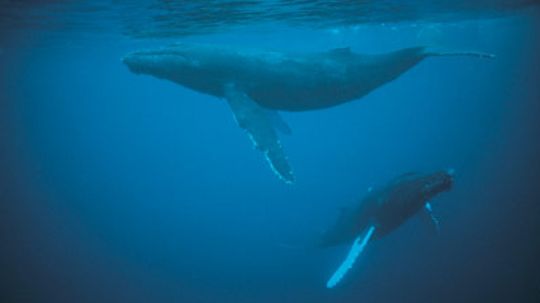Have you ever wondered if whales and dolphins sleep? These majestic creatures, known for their intelligence and grace, have long captivated the human imagination. However, their sleeping habits remain a subject of scientific inquiry. Delving into the depths of marine biology, we uncover intriguing insights into the slumbering routines of these remarkable beings.
An Unconventional Slumber: The Sleep-Wake Cycle in Aquatic Giants
Contrary to our conventional understanding of sleep, whales and dolphins exhibit a unique pattern called unihemispheric slow-wave sleep (USWS). This means that only one hemisphere of their brain sleeps at a time while the other remains awake. Such an adaptation allows them to maintain essential functions like breathing and maintaining awareness even during rest periods.
This unconventional sleep pattern is crucial for survival in an aquatic environment where constant vigilance is necessary to avoid predators or navigate through vast oceanic territories. While it may seem peculiar compared to our own uninterrupted slumbers, this evolutionary trait has proven highly effective for these marine mammals.
A Balancing Act: The Need for Rest amidst Oceanic Challenges
In addition to USWS, another fascinating aspect emerges when examining how whales and dolphins manage their need for rest without compromising vital activities such as feeding or migration. Research suggests that they engage in short bursts of deep sleep throughout the day rather than having prolonged periods of unconsciousness like humans do at night.
This strategic approach enables them to strike a balance between obtaining sufficient restorative rest while fulfilling essential tasks required for survival. It showcases nature’s ingenuity in adapting organisms to thrive within challenging environments by redefining traditional notions surrounding sleep patterns.
The Mysteries of Sleep: Unraveling the Purpose and Benefits
While scientists continue to unravel the mysteries surrounding sleep, understanding its purpose for whales and dolphins remains an ongoing endeavor. Some theories propose that sleep aids in memory consolidation, energy conservation, or even facilitating social interactions within their complex societies.
Despite the challenges of studying these elusive creatures in their natural habitats, advancements in technology have allowed researchers to gain valuable insights into their sleeping behaviors. By utilizing specialized equipment such as underwater cameras and acoustic monitoring devices, scientists can observe these marine mammals’ slumbering routines with increasing precision.
In Conclusion: A Window into the Sleeping World of Marine Mammals
The enigmatic world of whale and dolphin sleep continues to captivate both scientific minds and curious individuals alike. Through unihemispheric slow-wave sleep, strategic rest patterns, and ongoing research efforts, we are gradually piecing together a comprehensive understanding of how these magnificent creatures navigate the realm of slumber beneath oceanic depths. As our knowledge expands, so does our appreciation for nature’s intricate designs that allow life to thrive in diverse environments.

